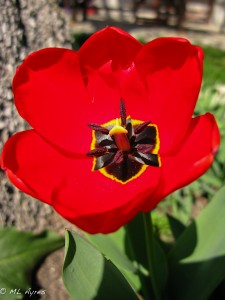 Last week there were snow flurries and biting winds. This week spring exploded. Warm southerly winds came up, and tulips and daffodils pushed their way to sunlight. Alyssum, purple clover, cornflowers and bluebells line the lanes and every growing thing is green and exuberant with life. Walnut trees are budding green, and hazelnut trees are clothed in pink. Plum trees are blooming, white blossoms thick on their skinny branches, with bees nuzzeling for nector.
Last week there were snow flurries and biting winds. This week spring exploded. Warm southerly winds came up, and tulips and daffodils pushed their way to sunlight. Alyssum, purple clover, cornflowers and bluebells line the lanes and every growing thing is green and exuberant with life. Walnut trees are budding green, and hazelnut trees are clothed in pink. Plum trees are blooming, white blossoms thick on their skinny branches, with bees nuzzeling for nector.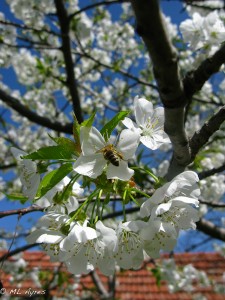
In midsummer the villagers pick the plums, press them and distill their juice to make homemade Rakia, a powerful local brandy. 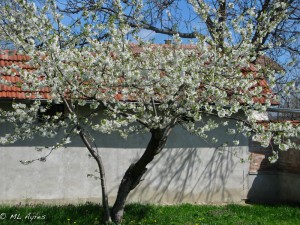 Grape vines and mulberry trees are still dormant, waiting for summer. Most of the grapes that grow here are Gamay, and in autumn are pressed to produce a wine similar to Beaujolais. Mulberry wine, good in its own right, resembles no other wine I’ve ever tasted. But here, mulberries are used for goat feed.
Grape vines and mulberry trees are still dormant, waiting for summer. Most of the grapes that grow here are Gamay, and in autumn are pressed to produce a wine similar to Beaujolais. Mulberry wine, good in its own right, resembles no other wine I’ve ever tasted. But here, mulberries are used for goat feed.
The village in which we now sojourn is a working village, one that follows a centuries old way of life and defines sustainability. The houses are mud brick and stone, but not at all primitive. Solar arrays sprout from roofs and high speed WiFi is everywhere.
Each family has a flourishing vegetable garden, grape vines, and chickens. Some have a pig or two, maybe a cow. Others have a few sheep and goats 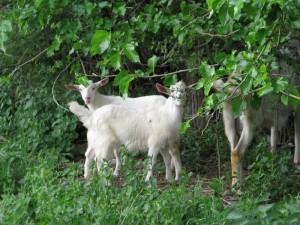 that provide milk and cheese, and in springtime kids and lambs. In our corner of the village, in the morning, a shepherd gathers both sheep and goats along the lanes and takes them across the stream and a little way uphill to the village green. There the animals graze the day away while the shepherd watches over them. In late afternoon he leads them to their homes, where they are locked in safely for the night. Packs of jackals live in the nearby hills, and come down to the village during winter nights. I’ve not heard of jackals taking a sheep or goat since we’ve been here, but I’m told it has happened in the past.
that provide milk and cheese, and in springtime kids and lambs. In our corner of the village, in the morning, a shepherd gathers both sheep and goats along the lanes and takes them across the stream and a little way uphill to the village green. There the animals graze the day away while the shepherd watches over them. In late afternoon he leads them to their homes, where they are locked in safely for the night. Packs of jackals live in the nearby hills, and come down to the village during winter nights. I’ve not heard of jackals taking a sheep or goat since we’ve been here, but I’m told it has happened in the past.
At the first of March a local custom is to tie a red and white striped cord, a marinitsa, around your wrist. The marinitsa is to remain on your wrist until you see the first storks of the season. When you see the first storks of the season you remove the marinitsa and tie it to a tree branch. Doing so brings good luck. 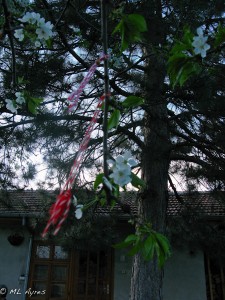 The storks arrived this week, flying high, wings spread wide, coming in pairs and claiming locations for their nests, on high roofs, poles and tree tops.
The storks arrived this week, flying high, wings spread wide, coming in pairs and claiming locations for their nests, on high roofs, poles and tree tops.
Village life is seductive, with its easy pace and close connection with the earth, and this is a soft time of year, with mist rising from the river in mornings. 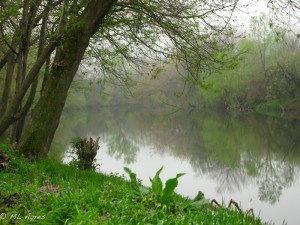
But we’ll soon be moving on; it’s what we do. Perhaps we’ll walk across France this summer, or wander the footpaths of Wales, or find our way along the Camino de Santiago. The road is calling.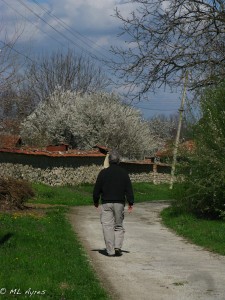
 Sun, Apr 5, 2020: Killing Mr. JonesHere’s a link to story I was able to break out from the publisher. It’s free to download for the duration of this pandemic. A… »
Sun, Apr 5, 2020: Killing Mr. JonesHere’s a link to story I was able to break out from the publisher. It’s free to download for the duration of this pandemic. A… »Thu, Apr 2, 2020: Cabaret, darkness, living on the edge
Sitting alone in your room? I post this because it’s relevant for our time. The film captures a country sliding into darkness. The… »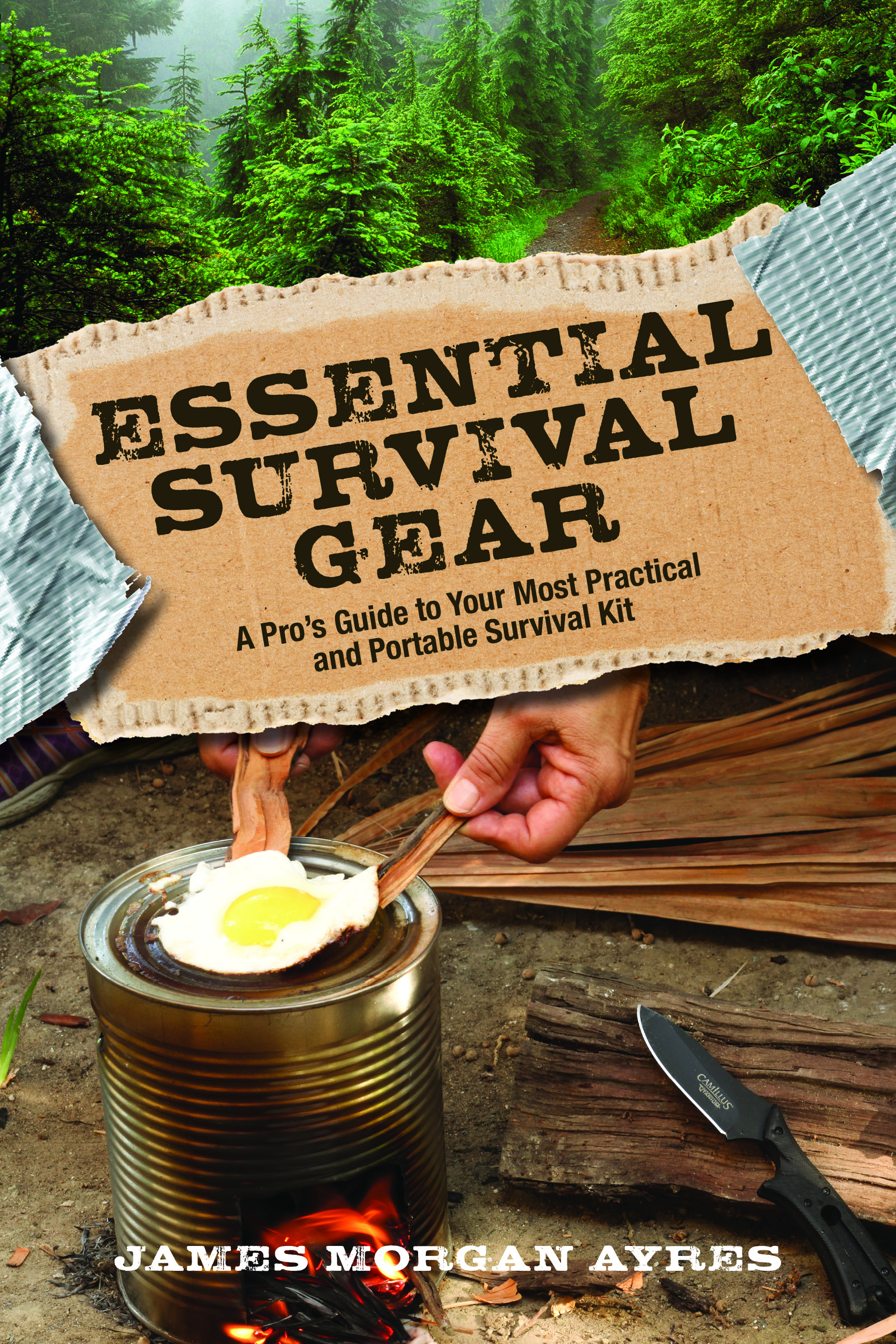 Wed, Apr 1, 2020: On HoardingThe current Covid-19 pandemic has caused many to panic, which is the root word of pandemic, and to clean the shelves at supermarkets of… »
Wed, Apr 1, 2020: On HoardingThe current Covid-19 pandemic has caused many to panic, which is the root word of pandemic, and to clean the shelves at supermarkets of… »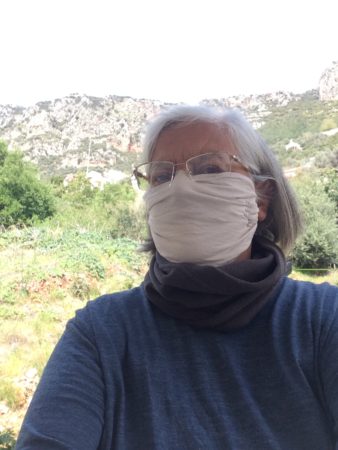 Mon, Mar 30, 2020: Masks Save Lives – Covid-19Friends, my efforts to persuade my publishers to provide my books free for the duration of this pandemic have so far been unsuccessful. I… »
Mon, Mar 30, 2020: Masks Save Lives – Covid-19Friends, my efforts to persuade my publishers to provide my books free for the duration of this pandemic have so far been unsuccessful. I… »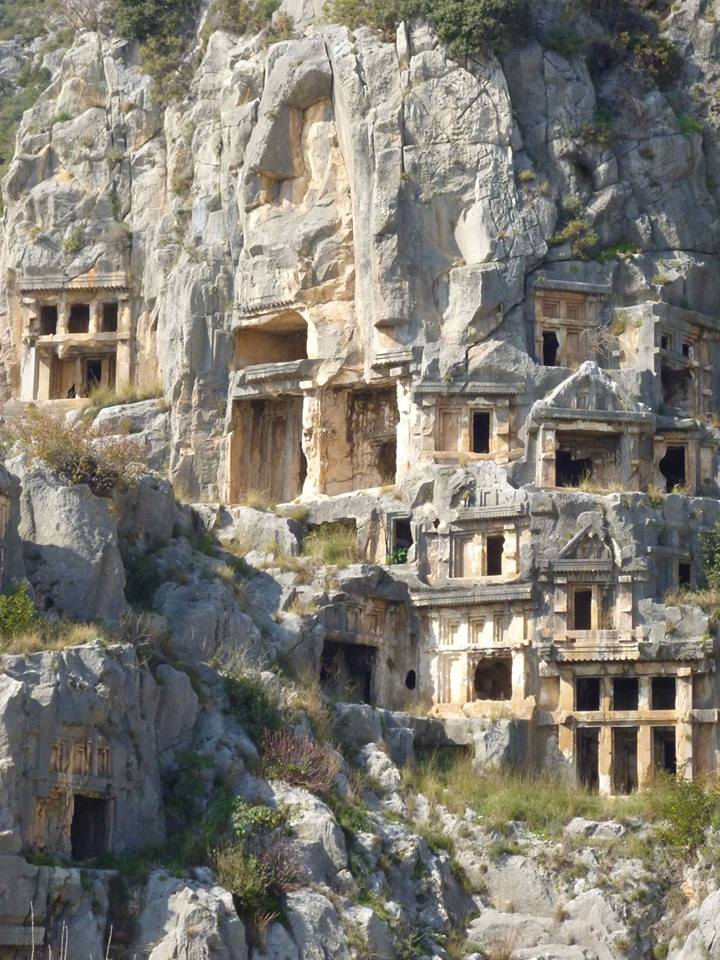 Sun, Mar 29, 2020: Visions of ApocalypseFriends, I have requested my publishers to make all of my books -ebook versions- free during this pandemic. Some of my books are primarily… »
Sun, Mar 29, 2020: Visions of ApocalypseFriends, I have requested my publishers to make all of my books -ebook versions- free during this pandemic. Some of my books are primarily… » Fri, Aug 23, 2019: Hijacked TwitterA friend set up a Twitter account for me some years ago. I never used it. Today I discovered that someone hijacked it, posted covers of my… »
Fri, Aug 23, 2019: Hijacked TwitterA friend set up a Twitter account for me some years ago. I never used it. Today I discovered that someone hijacked it, posted covers of my… » Sun, Aug 18, 2019: The IncidentA new short story, available on Amazon for .99 cents. Jesse J. Rideout, a young covert operator, returns to civilian life to complete… »
Sun, Aug 18, 2019: The IncidentA new short story, available on Amazon for .99 cents. Jesse J. Rideout, a young covert operator, returns to civilian life to complete… » Sat, Aug 10, 2019: Seas and Oceans Without EndFor some reason I do not understand I feel most at home on the shores and islands of the Mediterranean and Aegean and all of their… »
Sat, Aug 10, 2019: Seas and Oceans Without EndFor some reason I do not understand I feel most at home on the shores and islands of the Mediterranean and Aegean and all of their… »
